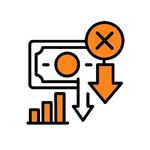
Defining middle-class income in South Africa is complex, with thresholds ranging from R5 000 to R29 000 per month depending on the source. Persistent unemployment, cost-of-living differences, and the type of employment further complicate this classification. Even within this range, high debt, rising costs, and limited savings mean that middle-income status does not always ensure financial security.
Key Takeaways
- Middle-Class Income Ranges Are Broad and Unclear: Estimates vary widely, from R5 000 to R29 000 per month, with no single official definition, making classification difficult in South Africa’s high-unemployment environment.
- Higher Earnings Do Not Guarantee Financial Stability: Many middle-income households face significant debt burdens, with some spending about two-thirds of their monthly income on repayments despite earning above R20 000.
- Strengthening Financial Stability Requires Action: Key steps include managing debt, maintaining an emergency fund, diversifying savings, securing adequate insurance, controlling spending, and using tax-efficient investment tools.
About Arcadia Finance
Arcadia Finance makes borrowing simple. Choose from 19 fully NCR-compliant lenders, pay zero application fees, and enjoy a seamless process that ensures safe and reliable loan options suited to your needs.
Who Are the South African Middle Class?
In South Africa, there is no single, universally accepted definition of what qualifies as middle class, and income estimates differ significantly. Figures range from as low as R5 000 per month to as high as R29 000 per month, depending on the source and criteria used.
Identifying exactly who belongs to the middle-class segment becomes even more challenging when the country’s persistently high unemployment levels are taken into account.
According to the latest data from Stats SA, South Africa’s official unemployment rate rose to 33.2% in the second quarter of 2025, up from 32.9% in the first quarter. This marked the second consecutive quarterly increase, even as analysts had expected slight improvements.
The expanded definition of unemployment, which includes discouraged job seekers, stood at 42.9% in Q2 2025, reflecting the broader labour market pressures.
The total number of unemployed people now sits at 8.5 million, one of the highest levels since records began in 2008.
With unemployment at such extreme levels, any person earning even R1 per month from any form of work is still counted among the roughly 16.7 million employed individuals in South Africa. This reality highlights how official employment statistics often mask the economic struggles of many households, further complicating efforts to establish a precise and consistent definition of the term “middle class” in the country.

Financial Realities In South Africa
South Africa’s official unemployment rate currently sits at 33.2% (Q2 2025), slightly up from 32.9% earlier this year. In practical terms, the classification of “employed” still includes anyone earning as little as R1 per month from any form of work, meaning millions of South Africans are counted in the statistics despite having very low or irregular income. Roughly 16.7 million South Africans fall into this category of receiving some level of income.
Average Salaries In The Formal Sector
For individuals employed in the formal sector, often used as a benchmark when identifying the middle class, the average monthly salary is now R28 289 (as of February 2025). This represents employees in more structured and stable employment compared to informal work.
Reaching or exceeding this amount may place an individual within the middle-income category under certain definitions, but the reality is more complex.
Changes In Average Income Levels
According to Statistics South Africa (Stats SA), the current average salary reflects a 5.6% increase year-on-year, rising from R26 800 in early 2024 to R28 289 in early 2025. However, on a quarter-to-quarter basis, there was a 0.1% decline. This highlights how modest income growth struggles to keep up with the rising cost of living, leaving many households under financial pressure.
Varying Definitions Of Middle Class
Not all agencies agree on the income range that defines the middle class.
- Some assessments suggest that earning around R22 000 per month is sufficient to be considered middle class.
- The Bureau for Economic Research (BER), in its most recent consumer confidence report, defines middle-income households as those earning between R5 000 and R20 000 per month.
- Discovery Bank, in its SpendTrend 2024 report, identifies mass affluent (middle-income) individuals as earning between R100 000 and R350 000 per year, equivalent to roughly R8 000 to R29 000 per month.
Economic Pressures On Middle-Income Households
While there is no single agreed definition of the middle class, most analysts acknowledge one shared reality: middle class does not always mean financially comfortable. Even among households earning more than R20,000 per month, debt is a heavy burden. On average, middle-income households spend around two-thirds of their monthly income on debt repayments, leaving limited room for savings or discretionary spending.
This shows that higher earnings do not automatically translate to financial stability, as cost-of-living pressures and debt obligations continue to weigh heavily on many households.

Mistakes The South African Middle Class Make

Accumulating Excessive Debt
A recent Reserve Bank study found that 65% of credit card users carry a balance each month. This means that a large portion of South Africans are comfortable paying interest on ongoing credit card debt, whether due to necessity or personal choice.
For middle-income earners aiming to improve their financial position, this is a costly habit. One of the most effective ways to free up money and maintain control is to set credit card payments to be cleared in full each month through automatic payments.
In reality, people at any income level are financially better off avoiding debt wherever possible. Carrying a credit card balance provides no tangible benefit, only additional interest costs, higher debt, and financial pressure.

Failing To Maintain An Emergency Fund
If faced with an unexpected R40 000 expense, many South Africans would find it difficult to cover the cost.
A lack of emergency savings can quickly lead to financial instability. Without accessible funds, unforeseen events such as medical emergencies, urgent home repairs, or vehicle breakdowns can push individuals into debt.
Financial experts often recommend keeping between three and six months of living expenses in a dedicated emergency fund. Even if that amount is not immediately achievable, setting aside any amount in a separate account can provide a vital safety buffer when the unexpected happens.

Not Increasing Retirement Contributions With Pay Raises
Building enough savings for retirement requires long-term commitment and consistent contributions, sometimes for several decades. If contributions remain stagnant despite salary increases, retirement targets can be delayed significantly.
A practical approach is to increase retirement contributions in line with salary raises. For example, if you receive a 4% pay increase and currently save R500 per month, raising your contribution proportionally helps your retirement savings grow at the same pace as your income.

Depending Solely On A Work-Based Retirement Plan
While employer-sponsored retirement plans offer convenience, relying solely on one account may leave you short of your financial goals. Over-dependence on tax-advantaged retirement accounts can also lead to a higher tax burden when withdrawing funds in retirement.
It is worth considering a mix of retirement savings options to diversify both investments and future tax liabilities.

Overlooking Medical Aid Savings Accounts
For those with high-deductible medical aid plans, a medical aid savings account can be an effective tool. These accounts allow individuals to save for healthcare expenses in a tax-efficient way, covering both current and future medical costs.
By making regular contributions, you can reduce the impact of medical expenses on your overall budget while ensuring you are prepared for unexpected health-related bills.

Postponing Retirement Savings
One of the most common middle-class financial mistakes is delaying retirement contributions in favour of other goals such as paying off debts, purchasing property, or funding children’s education. While these objectives are important, postponing retirement savings often results in lost years of growth.
For middle-income earners, starting early is essential because time allows compound growth to have a substantial effect. Even a modest monthly contribution can grow significantly over time if it is increased gradually. For instance, beginning with 1% of income and adding another 1% each year until reaching between 10% and 15% can help build a sufficient retirement fund.

Neglecting To Update Beneficiary Details
Outdated beneficiary forms on retirement accounts, life insurance policies, and annuities can cause assets to be distributed against your intentions. Life events such as marriage, divorce, or changes in family circumstances are key times to review and update these documents.
Since beneficiary designations legally override a will, failing to update them can result in significant sums being transferred to unintended recipients. This is a risk that can be avoided through regular checks and updates.

Overspending On Depreciating Assets
Spending large sums on assets that quickly lose value, such as new cars, is another common financial error. Vehicles depreciate from the moment they are purchased, which makes allocating extra funds to them an inefficient financial choice.
For example, committing R2 500 or more each month towards an expensive vehicle could instead be directed into investments or an emergency fund. Many middle-class South Africans would benefit more from driving reliable older cars and using the savings to strengthen their financial position.

How to Strengthen Middle-Class Financial Stability
Building a strong financial foundation is essential for South Africans aiming to maintain or improve their middle‑class status. Here are practical steps to help stabilise finances and create lasting security:
Tackle Debt Strategically
High levels of debt among middle‑income households leave little room for savings or unexpected expenses. Nearly 79% of middle-class South Africans dedicate much of their net income to servicing debt, creating vulnerability to any financial shock.
You can take action by:
- Consolidating high‑interest debt into lower‑rate products.
- Prioritising repayment of credit cards and other unsecured loans.
- Avoiding additional debt unless absolutely necessary.
Build and Protect an Emergency Fund
Unexpected crises often deplete savings or force households into debt. While an emergency fund of three to six months’ living expenses is advisable, having any amount set aside separately is better than nothing. Automate small monthly contributions until the fund reaches a useful buffer.
Diversify Savings Through Community Schemes
Traditional stokvels remain a reliable way to save and access lump sums for major expenses or investment. With around R50 billion invested annually in stokvels, half of South African adults participate. Consider both contribution and investment stokvels to benefit from peer accountability and pooled resources.
Seek Professional Financial Advice
Many middle-income earners lack access to tailored financial planning services. In particular, black professionals are underserved despite reported demand. Consult a trusted financial planner to address:
- Budgeting and savings strategies.
- Debt management and repayment plans.
- Retirement planning and risk protection.
Ensure Adequate Income Protection
Savings alone may not cover prolonged loss of income from illness or injury. Research shows that many professionals overestimate the durability of emergency funds and remain underprotected. Explore income protection and incapacity cover as part of a broader financial safety net.
Control Spending and Live Within Means
Many individuals get trapped in a cycle of debt due to lifestyle inflation and unnecessary spending. Advice from South Africans who have achieved financial stability emphasises one principle clearly: “live below your means”.
Practical steps include:
- Avoiding new credit or buy-now-pay-later agreements.
- Resisting lifestyle upgrades beyond what your income sustains.
- Distinguishing needs from wants, especially when starting to save.
Save Through Tax-Efficient Instruments
Tax‑free savings accounts offer a way to grow wealth while reducing tax liability. South Africans can save up to R36 000 annually in such accounts, up to a lifetime limit of R500 000. Automate regular contributions to take full advantage.
Conclusion
While the income threshold for South Africa’s middle class remains open to interpretation, it is clear that financial stability depends on much more than earnings alone. High debt levels, rising living costs, and the absence of adequate savings can place even well-paid households in a vulnerable position. By managing debt effectively, building an emergency fund, diversifying savings, securing proper insurance, and making disciplined spending choices, middle-income earners can safeguard their position and work towards long-term financial security.
Frequently Asked Questions
There is no official definition, but estimates range between R5 000 and R29 000 per month, depending on the source and criteria used.
No. Many middle-income households spend a significant share of their earnings on debt repayments, leaving little room for savings or unexpected costs.
Key steps include reducing debt, maintaining an emergency fund, diversifying savings through tools like stokvels, and using tax-free savings accounts.
It acts as a safety net for unexpected expenses such as medical bills or urgent repairs, preventing reliance on high-interest debt.
No. Relying on a single retirement account can be risky. A diversified retirement strategy can provide better financial security and reduce future tax burdens.
Fast, uncomplicated, and trustworthy loan comparisons
At Arcadia Finance, you can compare loan offers from multiple lenders with no obligation and free of charge. Get a clear overview of your options and choose the best deal for you.
Fill out our form today to easily compare interest rates from 19 banks and find the right loan for you.



